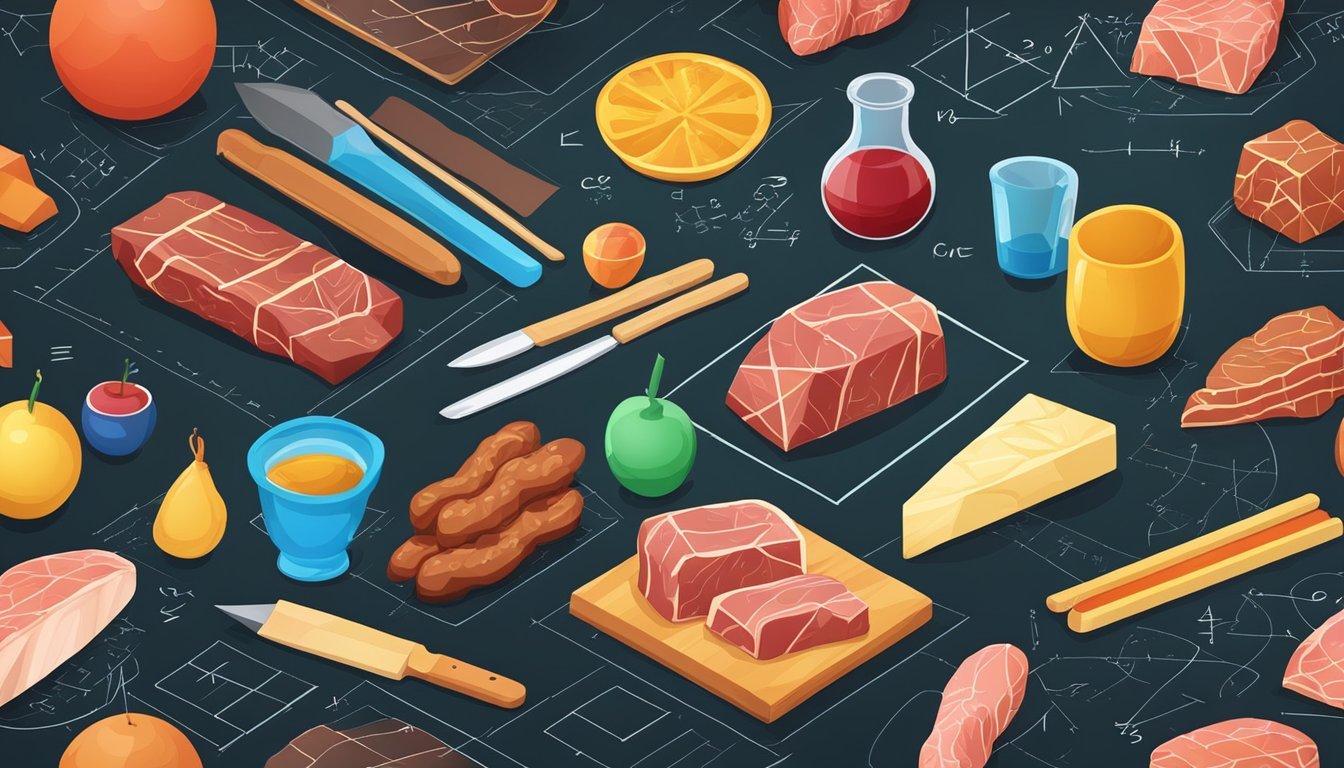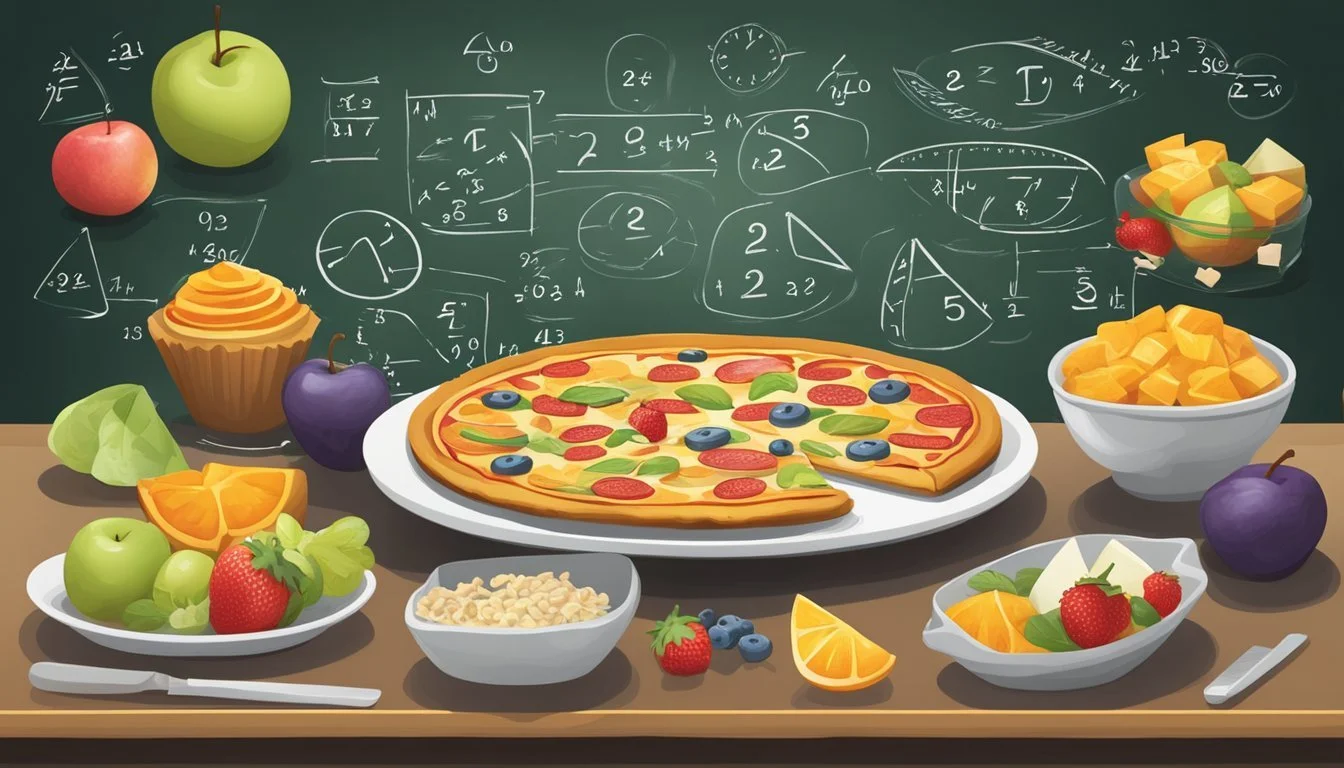Meat Your Math
Insights into Calculating Sustainable Consumption
For those struggling with math problems, there are now more tools than ever to help. With platforms like Mathway, GeoGebra, and MathGPT, solving complex equations has never been more accessible. These tools not only provide answers but also offer step-by-step explanations to enhance problem-solving skills.
Many learners find it beneficial to use multiple resources. Symbolab, for instance, advises that carefully reading the problem and identifying relevant information are crucial steps. These methods align with third-party strategies that suggest using inverse operations to verify solutions.
Technological advancements have made it easier to tackle tough questions in math. From uploading screenshots on MathGPT to utilizing interactive solvers like GeoGebra, students can find support tailored to their needs. Implementing these resources can transform even the most challenging math problems into manageable tasks.
The Mathematics of Meat Production
Mathematical techniques play a crucial role in optimizing meat production. By analyzing statistical patterns and constructing models, stakeholders aim to increase efficiency and sustainability in the agricultural sector.
Mathematical Modelling in Agriculture
Agricultural processes benefit from mathematical modelling, which incorporates variables such as feed intake, growth rates, and environmental factors. Algebra and calculus are particularly valuable for predicting outcomes and optimizing feed formulas.
For instance, linear programming can help determine the most cost-effective feed mix. Farms use conversion rates to calculate how feed inputs are converted to meat outputs. This ensures that every resource is utilized efficiently, reducing waste and improving profitability.
Statistics and Consumption Patterns
Understanding statistics related to meat consumption helps in making informed decisions regarding production levels. Mean and mode consumption values across different regions influence how much meat is produced and allocated.
Consumption patterns vary significantly, necessitating thorough analysis to avoid surpluses or shortages. Data on age, economic conditions, and preferences are used to fine-tune production targets. Accurate, statistical forecasting ensures that production aligns with market demands, preventing excess inventory and meeting consumer needs effectively.
Nutritional Calculations and Health
Proper nutritional calculations are essential for maintaining a balanced diet and ensuring adequate intake of macro and micronutrients. This section will address the mathematical methods used to analyze and balance nutrients effectively.
Macro and Micronutrient Math
Understanding the amounts of macronutrients—carbohydrates, proteins, and fats—requires basic arithmetic. For example, calculating the carbohydrate content involves dividing the desired intake by the amount listed on the food label. For instance, needing 25 grams of carbs from a food with 29 grams per serving involves dividing 25 by 29, yielding approximately 0.86. Multiplying this by the serving size then gives the exact portion size needed.
Micronutrients, such as vitamins and minerals, often appear in smaller quantities but are equally important. Analyzing these requires a similar approach. Calculators and nutritional databases can aid in these conversions, enhancing accuracy and ensuring nutrient needs are met.
Balancing Diets with Algebra
Balancing one’s diet often resembles solving an algebra problem. For instance, calculating the Basal Metabolic Rate (BMR) is key. For males, multiply weight in kilograms by 1 calorie/kg/hour and by 24 hours. For females, use 0.9 calories/kg/hour. This BMR is then adjusted by an activity factor to determine total energy expenditure (TEE).
Adjustments in intake should also factor in dietary goals like weight loss or muscle gain. Inequalities and algebraic equations are tools that can help structure these adjustments. For example, determining the proportion of each macronutrient based on caloric goals involves setting up equations and solving for unknowns. Such problem-solving skills assist in creating balanced, nutritious meal plans.
Accurate calculations and problem-solving in nutrition lead to better health outcomes and more informed dietary choices.
Culinary Mathematics
Culinary mathematics is essential for chefs and foodservice professionals. It involves precise calculations such as ratios, scaling, and conversions to ensure consistency and quality in food preparation.
Recipes and Ratios
Recipes require accurate measurements to achieve consistent results. Ratios play a significant role in balancing ingredients. For example, the ratio of flour to water in bread baking determines texture and moisture.
Understanding ratios helps simplify the process of adjusting recipes. This ensures that all ingredients remain in proportion. Apps and math solvers can assist in maintaining the right variables for each ingredient to avoid errors.
Key aspects include:
Ingredient Ratios: Flour to water, salt to sugar.
Cooking Times: Time to weight ratio for meats.
Balancing Flavors: Sweetness to acidity ratio in sauces.
Scaling and Conversion Challenges
Scaling recipes up or down for different serving sizes can be complex. Chefs need to convert measurements between metric and U.S. systems, often using conversion tables.
Scaling involves expanding or reducing ingredient quantities proportionally. This ensures that the quality and taste remain consistent, whether cooking for two or twenty.
Common challenges include:
Conversion Factors: Knowing the right conversion factors for different units.
Portion Control: Calculating exact portions to manage food costs and waste.
Consistency: Maintaining flavor and texture when changing recipe size.
Using tools and apps designed for culinary math problems can simplify these challenges. They help to avoid errors and ensure success in scaling and conversions.
Math in Meat Processing and Distribution
Mathematics plays a critical role in optimizing meat processing and efficiently managing inventory. Implementing mathematical strategies ensures cost savings and increased productivity.
Optimization and Efficiency
In meat processing, optimization helps reduce waste and improve throughput. Companies use mathematical models to determine the ideal processing steps. For example, they utilize linear programming to allocate resources optimally across various packaging plants.
Mathematical algorithms such as matrices help in solving equations related to production costs and output rates. Graph theory can also assist in designing transport routes, ensuring minimal cost and time.
Process simulations often rely on STEM applications to improve practices. By employing math solver tools, managers can predict outcomes, adjust processes, and streamline operations, ultimately leading to more efficient meat processing.
Inventory Management Calculation
Effective inventory management hinges on accurate mathematical calculations. Companies track meat products using algorithms that forecast demand and monitor stock levels in real-time.
Employing advanced inventory management systems, businesses can automate reorder points through solver equations and matrices. This predictive approach ensures that excess stock or shortages are minimized.
Graph-based methods aid in visualizing stock levels, helping to quickly identify patterns and anomalies. By integrating precise inventory calculations into their strategy, meat processing firms can maintain optimal stock levels, reducing costs and ensuring product availability.
Integrating these mathematical techniques guarantees that meat processing and distribution are conducted in the most effective and efficient manner possible.
Consumer Mathematics
Understanding consumer mathematics can help individuals manage their resources effectively. By focusing on price comparisons and budgeting, as well as interpreting meat labels through mathematical concepts, consumers can make more informed decisions.
Price Comparisons and Budgeting
Effective budgeting starts with accurately comparing prices. To compare prices, one must often use basic arithmetic and understand percentages. For example, comparing the price per pound of ground beef from different stores requires division to find the unit price.
Using a calculator helps to avoid errors in these calculations. Sometimes, store deals may offer discounts like "buy one, get one 50% off," which requires understanding fractions and percentages to determine the actual savings. Written step-by-step explanations can break down these calculations so that consumers can follow along and apply them to their own situations. Keeping track of these expenses in a budget using a spreadsheet or budgeting app can further aid in resource management.
Understanding Meat Labels through Math
Meat labels provide detailed information about the product, some of which requires mathematical skills to interpret correctly. Percentages are commonly found on these labels, indicating the fat content, for example. Calculating the percentage of lean meat versus fat helps consumers make healthier choices.
The weight of packages can sometimes be deceptive, making it essential to calculate the cost per unit weight to compare different products accurately. Additionally, knowing how to interpret variables and inequalities is key when assessing nutritional content such as calories and sodium levels per serving, which can be listed in different units.
Reading and understanding these labels help shoppers make informed decisions not only based on price but also on the quality and nutritional value of the meat they purchase. Breaking these details down with mathematical concepts ensures better clarity and educated choices.
Meat Substitutes and Market Analysis
Meat substitutes are making significant impacts on market trends and environmental sustainability. They contribute to changing consumption patterns while presenting a viable strategy for reducing the carbon footprint.
Impact of Alternatives on Market Trends
The market for meat substitutes has seen robust growth over the past several years. Valued at USD 6.42 billion in 2023, it is projected to grow to USD 17.79 billion by 2032. This growth, marked by a CAGR of 12.25%, highlights the rising consumer demand for plant-based products.
Major players shaping this market include Beyond Meat, Impossible Foods, and Conagra Brands. Their innovative products, which mimic the flavor and texture of traditional meat, attract health-conscious and environmentally aware consumers.
Retail channels dominate the market, with foodservice making up about a third. The U.S. market alone will expand from USD 2.25 billion in 2024 to USD 3.77 billion by 2029, indicating strong regional growth.
Calculating the Carbon Footprint
Substituting traditional meat with plant-based alternatives significantly reduces greenhouse gas emissions. Calculations show that producing plant-based meat results in up to 90% fewer emissions compared to beef production.
For example, Beyond Meat and Impossible Foods report much lower water and land use in their production processes. By reducing reliance on animal farming, which is resource-intensive and an environmental stressor, meat substitutes propose a sustainable strategy for the food industry.
Various resources, such as environmental impact calculators and academic tutorials, provide insights into these reductions. Algebraic mean and mode can aid in analyzing the carbon footprint data more effectively. Graphs showcasing comparative analysis further illustrate the environmental benefits of meat substitutes.
These quantitative measures help validate the environmental claims and reinforce the market's strategic direction towards sustainability.
Technological Advances in Meat Math
The intersection of technology and meat production has led to significant advancements. From software that helps calculate nutritional values to innovations that optimize farming processes through calculus, these technologies are revolutionizing the industry.
Software for Nutritional Calculations
Modern software tools and apps play a crucial role in calculating the nutritional content of meat products. Math solvers and nutritional calculators allow producers to analyze and optimize the nutritional profile of both traditional and cultured meat. These tools can account for various variables such as protein content, fat percentages, and caloric values.
Additionally, many applications offer tutorials to guide users through complex nutritional computations. This makes it easier for meat producers to ensure their products meet dietary standards effectively. Enhanced algorithms underpinning these tools enhance precision, leading to healthier and more accurately labeled meat products.
Innovations in Farming Calculus
In farming, calculus has become indispensable for optimizing meat production processes. By modeling growth rates, feed efficiency, and other production variables, calculus helps in making informed decisions about resource allocation.
Technological advancements now enable farmers to use apps and software that apply calculus principles to predict outcomes like growth rates and feed consumption. These tools often incorporate machine learning to refine predictions based on real-time data, aiding in better farm management.
Calculators designed for farming calculus can perform complex computations swiftly, greatly reducing the time needed for manual calculations. As a result, farmers can achieve higher efficiency and sustainability in meat production.
Mathematical Education and Meat
When it comes to teaching math, integrating real-world scenarios such as cooking meat can enhance students' problem-solving skills and engagement. Resources and apps are crucial for providing step-by-step assistance and tutorials to bolster students' learning experiences.
Integrating Real-World Problems into Curriculum
Educators can make math lessons more relatable by framing problems that involve everyday activities like cooking a steak. For instance, explaining how heat transfers in meat relies on understanding algebraic equations and mathematical models. This approach not only piques interest but also demonstrates the practical application of mathematical concepts.
Real-world problems help students develop critical problem-solving skills. By analyzing how to achieve the perfect steak temperature, they learn about variables, functions, and calculations. This method aligns with Higher-Order Thinking Skills (HOTS), emphasizing analytical and evaluative processes.
Educational Resources and Apps
Utilizing apps and resources like MathGPT can greatly aid in teaching mathematical concepts through real-world examples. Apps offer step-by-step tutorials that guide students through problems, such as calculating the optimal cooking time for meat based on various data inputs. Such tools enhance understanding and provide instant feedback.
These resources often include a variety of problem-solving strategies tailored to different educational needs. From algebra to calculus, students can find interactive math help through digital platforms. Educational tools also offer personalized learning experiences, helping students grasp complex topics more efficiently. By integrating these resources, teachers can enrich their curriculum and support students' academic growth.
Questions and Answers
This section tackles common inquiries about meat consumption and math-related problem-solving. It provides detailed insights and step-by-step explanations on how mathematical concepts apply to understanding meat production and consumption.
FAQ on Meat Consumption and Math
One frequent question is how mathematics helps in planning balanced meals. Calculations involving protein, fat, and carbohydrate ratios ensure nutritional balance. Simple algebra helps calculate the amount of each nutrient needed based on daily requirements.
Another question explores the environmental impact of meat production. By using statistics, consumers can compare the carbon footprints of different meats. Data analysis helps in understanding which types of meat are more sustainable.
Resources like the USDA nutritional database provide essential information. Understanding these data points through math is crucial.
Advanced Problem Solving and Discussion
Tackling complex problems involves strategies like polynomial calculations to predict future meat demands. For instance, if meat consumption follows a certain growth curve, derivatives can forecast future trends.
Step-by-step explanations aid in solving these problems. Breaking down significant factors such as production rates and market demand offers clear insights. Applying these concepts helps in developing practical solutions.
Understanding inverse relationships is also important. For example, increasing meat prices might inversely impact consumption. Solving these problems often involves considering multiple variables and their interdependence.
In-depth discussion requires a strategic approach. Comprehensive data collection, variable analysis, and model formulation present a clear picture of the larger issues at hand.







